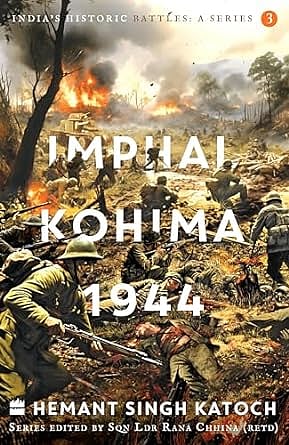The Far East Campaign

In his travel book The Innocents Abroad, Mark Twain recounts a mischievous anecdote concerning his visit to Sebastopol, which had been ravaged during the Crimean War. After seeing the sights of the “saddest wreck”, Twain and his companions set out to hunt for war relics. He discovered one of the co-passengers, who always diligently marked everything he collected, had one item labelled as “Fragment of a Russian General”. Upon closer inspection, Twain found the relic comprised “a couple of teeth and part of the jawbone of a horse”. The collector, however, was sanguine. He claimed his wife would not be able to tell a horse’s remains apart from those of a general.
However, not all trips that came to be eventually categorised as war tourism have been as blithely irreverent. Visiting battlefields from the past have also been a sacred duty for those seeking to pay their respects to a beloved family member or ancestor reported to have fallen in battle. For instance, when Saipan came to be recognised as a significant witness to World War II, the Japanese erected monuments all over the island to honour their dead soldiers.
There is no predicting the expectations of tourists or visitors. However, by drawing people connected to wars, battlefield guides can help improve the economy of places that were ravaged by military conflicts and forgotten afterwards. Hemant Singh Katoch’s meticulously researched battlefield guide on the Imphal Kohima 1944 battle will hopefully boost the economic prospects of places scattered across India’s war-torn places in the north-east, while also enriching our understanding of the region’s fascinating military history.
Referred to as “the turning point” in the Burma Campaign of World War II, a mighty clash between the British Fourteenth Army and the Japanese Fifteenth Army at Imphal and Kohima in 1944 had halted the Japanese incursion into India. The Asian power lost 30,000 men, while 23,000 were injured. The conflict has been recorded as the greatest defeat on land for Emperor Hirohito’s Japan. Katoch also underlines the significance of the war for Indians. Joining the march towards Imphal were 6,000 soldiers of the Indian National Army’s 1st Division, as Subhas Bose was “keen on his men being at the vanguard of the Japanese advance into India”.
Katoch’s prose displays a strong visual quality as he takes the reader through each hill, ravine, river, mountain, and forest. But far from merely romanticising the war, he uses vivid geographical details of the region to identify important characteristics of the conflict. The author guides the reader through all the roads taken by the Japanese to approach Imphal because the military strategy deployed there was a hub-and-spoke model—many battles were fought around the principal routes to Imphal. In contrast, Katoch points out the Kohima battleground as one small and compact area, while offering detailed advice on how to access the various vantage points that offer views of the battlefield from various angles.
The book also reveals the joys and the challenges of someone researching the past. At the base of the old Kuki Piquet near Kohima, Katoch comes across a Lee/Grant tank from World War II. Plaques carrying information helped him recreate the tank’s last day in service in 1944. On May 6, the tank “had careered down the slope in heavy rain and crashed against a tree…the crew jammed its machine guns to fire continuously, set the tank’s turret to rotate, and escaped”. It is here that the reader senses the researcher’s unbridled excitement upon discovering an undisturbed relic that eagerly shares its story.
However, not all memorable sites have been left untouched. Nearly eight decades since the war took place, concrete jungles have spread over many of these spots. The researcher admits that he has had to “adjust to new realities”. But a profound sense of optimism fuels Katoch’s narrative— the hope that to the dedicated researcher, the past is never completely lost.

